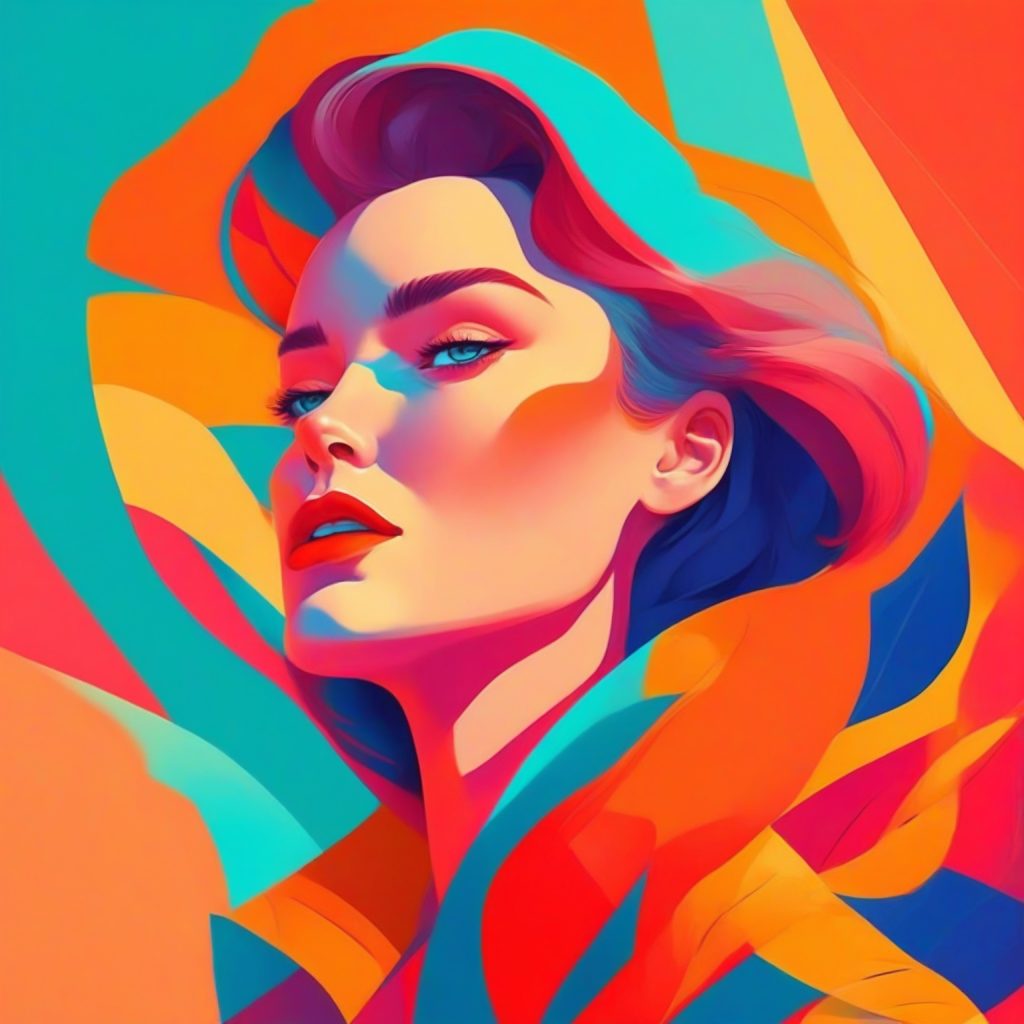Intrigued by the mysteries of addiction? Welcome to omgsogd.com, where we peel back the layers on this complex puzzle, revealing the fascinating science behind how substances hijack our brains. Prepare to embark on a journey that sheds light on addiction, not as a moral failing, but as a physiological disease influenced by the intricate dance of dopamine and brain pathways.
Beyond Willpower: Understanding the Root of Addiction
For centuries, addiction was often misunderstood as a lack of willpower or character. However, modern science paints a vastly different picture. We now know that addiction is far from a simple choice—it’s a disease that transforms the brain’s structure and how it processes information. The main culprit in this drama? A chemical messenger called dopamine, the mastermind of our brain’s reward system.
Imagine dopamine as the orchestra conductor for your brain’s reward symphony. Every bite of a delicious meal, every laugh with a loved one, every tick on a completed to-do list—these actions send dopamine notes swirling through the orchestra, creating a harmonious sense of satisfaction. The brain learns to link these actions with the pleasant dopamine melody, encouraging you to repeat them.
Unfortunately, addictive substances exploit this very system, injecting their own discordant notes into the reward symphony. They flood the brain with a synthetic, overpowering dopamine crescendo, drowning out the quieter but genuine melodies of natural rewards. This leaves you craving their artificial high, neglecting the simpler pleasures life offers, and pushing the conductor of your reward system off the podium. It’s not a mere choice to dance to this addictive tune; it’s a complex biological shift orchestrated by the potent influence of dopamine and its distorted reward signals.
The Alluring Waltz of Dopamine and Reward
Imagine this: evolution equipped us with a sophisticated dopamine dance party in our brains. Every time we do something good for survival, like finding that juicy berry patch or outsmarting a predator, dopamine bursts onto the scene like a flamboyant disco ball, showering the party with shimmering pleasure.
This dazzling light show not only pumps up the feel-good vibes but also engraves the action into our brain’s memory banks, making us say, “Hey, that was awesome, let’s do it again!” Dopamine even helps us move with smooth, coordinated steps, fine-tuning our survival skills. It’s like dopamine orchestrates a grand reward ballet, constantly telling our brains, “Repeat, repeat, this keeps you alive!” But here’s the twist: addictive substances can crash this party, bringing their own dark, hypnotic disco beats. They flood the dance floor with an overwhelming rush of artificial pleasure, drowning out the subtle joy of natural rewards. Suddenly, the berry patch seems dull, and surviving that predator feels trivial compared to the intoxicating rhythm of addiction.

It’s no longer a conscious choice between a healthy salad and a greasy burger; it’s a biological ballet controlled by the overpowering music of addictive substances. Understanding this shift, this hijacking of our brain’s reward party, is key to demystifying addiction and paving the way for compassion and recovery. Remember, it’s not about a lack of willpower on the dance floor; it’s about recognizing the manipulative music that pulls the strings.
Hijacking the Natural Reward System: How Addiction Takes Hold
Imagine your natural reward system like a gentle rain shower, nurturing the garden of your well-being with each drop of dopamine. Every healthy choice, every step towards survival, gets a sprinkle of pleasure, encouraging you to continue on the right path.
Now, picture addiction as a rogue monsoon, flooding the garden with an addictive substance’s dopamine deluge. This downpour of artificial pleasure drowns out the delicate joy of natural rewards, leaving your brain parched for anything less than the substance’s potent torrent. Your once lush garden struggles under the deluge, prioritizing the rush of addiction over the quiet satisfaction of healthy living. It’s not just about momentary enjoyment; it’s a complete rewiring of your brain’s landscape, transforming the subtle whispers of natural rewards into deafening demands for the addictive flood.
This isn’t a mere craving, it’s a desperate thirst for an artificially induced paradise, a biological shift driven by the tyrannical rule of addiction’s dopamine monsoon.
Tolerance Tango: The Brain’s Adaptation to Pleasure Overload
Picture that first cocaine-fueled dopamine party in your brain. It’s an all-you-can-eat buffet of pleasure, with receptors greedily gobbling up every molecule. But like any wild party, the hangover is brutal.

To compensate for the dopamine overload, your brain starts building tolerance walls, bricking up some receptors and turning down the volume on others. This means the next dopamine buffet, even if it’s the same size, feels like a bland snack. To chase that first euphoric high, you need to bring a bigger feast, pushing yourself to consume more and more just to get a taste of the original ecstasy. It’s a vicious cycle, like trying to fill a bottomless pit with shrinking portions of happiness.
This tolerance tango isn’t a conscious choice; it’s a biological adaptation, your brain desperately trying to maintain some semblance of normalcy in the face of an addictive dopamine storm. Understanding this rewiring, this dance of shrinking receptors and fading pleasure, is crucial in breaking free from addiction’s grip. It’s not about willpower failing; it’s about recognizing the limitations your brain has imposed in its attempt to cope with the artificial high.
The Ripple Effect: How Addiction Rewires the Brain Beyond Reward
Imagine dopamine as a master director, orchestrating not just pleasure but also your brain’s decision-making, memory, and judgment. It’s like a skilled puppeteer pulling the strings of your choices, guiding you towards actions that ensure survival and well-being. But addiction is the manipulative stagehand, slyly rewiring the circuits behind the scenes.
With chronic drug use, the director’s dopamine spotlight shifts, focusing on the artificial glow of the substance instead of the natural light of healthy choices. Memory plays tricks, morphing once-negative consequences into hazy afterthoughts. Judgment crumbles as the brain prioritizes the drug’s siren song over logic and reason.
Decision-making becomes a puppet show, controlled by the addictive script rather than conscious will. This isn’t just a matter of wanting more; it’s a complete transformation of the inner stage, where even the actors (thought processes, emotions) dance to the addictive rhythm. Recognizing this hijacking, this rewritten brain play, is key to understanding why addiction isn’t a moral failing but a biological tragedy. It’s not about willpower faltering; it’s about the director being replaced by a manipulative imposter, forcing the brain to perform a compulsive, destructive play.
Decoding Addiction: A Biological Mystery, Not a Moral Failing
A truth as clear as daylight: addiction is not a moral failing, but a cunning thief that steals control of our brain’s reward system. This intricate tango of chemicals and adaptations isn’t a choice, but a biological hostage situation orchestrated by the potent lure of dopamine. Recognizing this stolen dance, this hijacked reward symphony, is the first step towards tearing down the walls of stigma and paving the path to healing.
No longer can we judge individuals struggling with addiction; instead, we must offer compassion and understanding, acknowledging the biological chains that bind them. Just as we wouldn’t blame someone trapped in a collapsing building for their fear, we cannot blame those caught in the clutches of addiction for their struggle. It’s time to replace judgment with support, replacing whispers of moral failing with the chorus of science and empathy. Only then can we truly break the chains of stigma and guide individuals not as wayward souls, but as patients in need of a cure.
After all, understanding the intricate dance of addiction is not an intellectual exercise; it’s a compassionate imperative, a vital step towards treating these individuals with the dignity and respect they deserve. So let us move beyond outdated narratives and embrace the truth: addiction is a disease, and it’s time we treated it as such.
Breaking Free from Stigma: Compassion in the Face of Addiction
Like a suffocating fog, the stigma around addiction wraps around individuals, obscuring the path to help. Whispers of weakness and judgment echo in their ears, making the first step towards recovery feel like scaling a mountain blindfolded. But it’s time to rip through this fog with the sharp sword of understanding.

By acknowledging the biological roots of addiction, we shatter the preconceptions and replace them with empathy. We offer a hand, not a finger of blame, recognizing that addiction is not a moral failing, but a disease that demands compassion and support. This shift in perspective empowers individuals to emerge from the fog, to shed the cloak of shame, and to seek the help they need with heads held high.
It’s a journey, not a sentence, and with understanding as our guiding light, we can illuminate the path for those struggling in the darkness. Remember, compassion is not condoning; it’s recognizing the disease, offering a shoulder to lean on, and whispering, “You are not alone. Let’s walk this path together.” Only then can we truly create a world where addiction doesn’t isolate, but connects, where healing replaces judgment, and where hope blossoms even in the most challenging terrain.
Knowledge is Power, Compassion is Key: Navigating the Journey Together
As we explore the complex landscape of addiction, let’s remember that knowledge empowers us to break the chains of stigma. Share this journey of understanding with those seeking answers, and together, let’s build a world where everyone has access to the support and compassion they deserve.
To ponder upon:
“In understanding, we find empathy, and in empathy, we find the strength to break the chains of stigma.”
Stay curious, stay compassionate, and let’s continue supporting each other on the path to healing and understanding.







